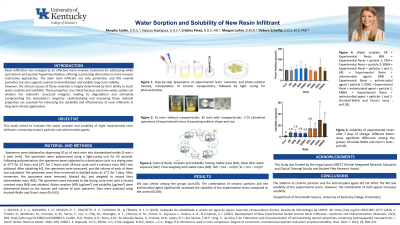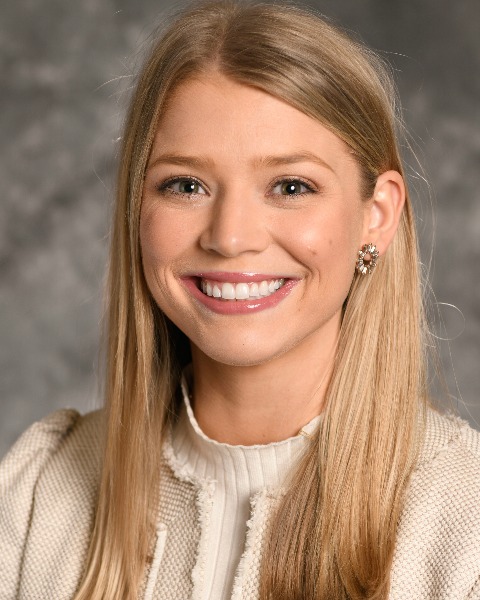Restorative
Water Sorption and Solubility of New Resin Infiltrate
391 - Water Sorption and Solubility of New Resin Infiltrant


Murphy Conlin, DDS
Resident
University of Kentucky, Lexington, KY
University of Kentucky
Lexington, Kentucky, United States- dS
debora Scheffel, DDS
Assistant Professor Division of Pediatric Dentisty
University of Kentucky
Lexington, Kentucky, United States .jpg)
Perez Cristina, DDS
Assistant Professor Division of Pediatric Dentisty
University of Kentucky
University of Kentucky
Lexington, Kentucky, United States
Presenting Author(s)
Research Mentor(s)
Program Director(s)
Purpose: Resin infiltration proved an effective microinvasive approach for managing white spot lesions and enamel hypomineralization. This study aimed to evaluate the water sorption and solubility of experimental resin infiltrants containing ceramic particles and antimicrobial agents.
Methods: Specimens were obtained by dispensing 50 µL of each resin into standardized molds (5 mm × 2 mm). The specimens were polymerized using a light-curing unit for 60 seconds. Following polymerization, the specimens were subjected to a desiccation cycle in a drying oven at 37°C for 22 hours and 23°C for 2 hours each 24-hour cycle until a constant mass (M1) was achieved. After obtaining M1, the specimens were measured, and the volume of each of them was calculated. The specimens were then immersed in distilled water at 37°C for 7 days. After immersion, the specimens were removed, blotted dry, and weighed to record their intermediate mass (M2). Subsequently, the specimens were returned to the drying cycle oven until a second constant mass (M3) was attained. Water sorption (µg/mm³) was calculated as the difference between M2 and M3, while solubility (µg/mm³) was determined by the difference between M1 and M3, divided by the volume. Results/
Conclusion: Final data is still pending.
Identify Supporting Agency and Grant Number:

.jpg)